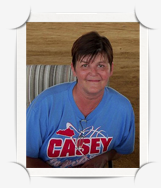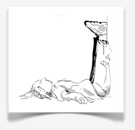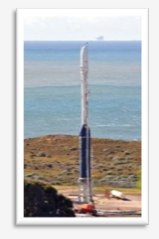NASA Explorer Schools welcomed the 1000th teacher to the NASA Explorer Schools project this past month: Marty Carmicle. She joins over a thousand NASA Explorer Schools educators from all 50 states; Washington, D.C.; Puerto Rico; and Department of State schools in Turkmenistan and Mexico.
Marty is in her 10th year of teaching at Casey County Middle School in Liberty, Ky., where she currently teaches both 7th- and 8th-grade mathematics classes.
Marty’s favorite part of teaching is the “Ah ha!” moment when a student finally “gets” the concepts. She also likes working on special projects with her classes. For example, she completed a project through the University of Kentucky early this year in which her students designed and built a hovercraft.
Marty has used some NASA educational materials in the past and looks forward to seeing what the NASA Explorer School Virtual Campus has to offer.
She has a bachelor’s degree in business administration from Lindsey Wilson College, a master’s degree in education from Eastern Kentucky University, and a master’s degree in special education from Campbellsville University.
Welcome, Marty!



 NASA Explorer Schools educator Holley Sykes, a resource teacher from Briarwood Elementary, just finished an activity called Fluid Shift. Students are challenged to simulate the bodily fluid shift seen in astronauts while in space. After taking a baseline heart rate and baseline ankle measurement, students lie on the floor and point their legs upward against the wall. Every minute their lab partner takes an ankle measurement and every two minutes a new heart rate. After 10 minutes, students compare their ankle measurements and heart rates.
NASA Explorer Schools educator Holley Sykes, a resource teacher from Briarwood Elementary, just finished an activity called Fluid Shift. Students are challenged to simulate the bodily fluid shift seen in astronauts while in space. After taking a baseline heart rate and baseline ankle measurement, students lie on the floor and point their legs upward against the wall. Every minute their lab partner takes an ankle measurement and every two minutes a new heart rate. After 10 minutes, students compare their ankle measurements and heart rates.  Here is a great idea for the Messenger: Staying Cool — My Angle on Cooling Effects of Distance and Inclination module. Your students can create solar “cookers.” One of the variables is choosing how the sun enters the cooker, either directly or at an angle. Share with us on NEON your students/ results.
Here is a great idea for the Messenger: Staying Cool — My Angle on Cooling Effects of Distance and Inclination module. Your students can create solar “cookers.” One of the variables is choosing how the sun enters the cooker, either directly or at an angle. Share with us on NEON your students/ results. Astronauts aboard STS-133 are wrapping up a series of scheduled spacewalks, or extravehicular activities. When astronauts venture outside of their spacecraft, they need spacesuits to protect them from the solar radiation, the cold temperatures of space and fast-moving particles called micrometeoroids.
Astronauts aboard STS-133 are wrapping up a series of scheduled spacewalks, or extravehicular activities. When astronauts venture outside of their spacecraft, they need spacesuits to protect them from the solar radiation, the cold temperatures of space and fast-moving particles called micrometeoroids. In 2008-2009, sunspots almost completely disappeared for two years. Solar activity dropped to hundred-year lows; Earth’s upper atmosphere cooled and collapsed; the sun’s magnetic field weakened, allowing cosmic rays to penetrate the Solar System in record numbers. It was a big event, and solar physicists openly wondered, where have all the sunspots gone?
In 2008-2009, sunspots almost completely disappeared for two years. Solar activity dropped to hundred-year lows; Earth’s upper atmosphere cooled and collapsed; the sun’s magnetic field weakened, allowing cosmic rays to penetrate the Solar System in record numbers. It was a big event, and solar physicists openly wondered, where have all the sunspots gone?  Youcan now change your NASA Explorer Schools Virtual Campus log-in to a differente-mail address. If you would like to update your contact information, please useyour preferred account to send an e-mail to
Youcan now change your NASA Explorer Schools Virtual Campus log-in to a differente-mail address. If you would like to update your contact information, please useyour preferred account to send an e-mail to  Glory is NASA’s newest member of a fleet of Earth-observing satellites known as the Afternoon Constellation, or “A-Train.” The satellites together offer a more cohesive and detailed picture of the Earth’s biosphere and climate. Glory will measure the affects of particles suspended in the atmosphere or aerosols. Aerosols can absorb sunlight, or they can reflect the sun’s energy back into space.
Glory is NASA’s newest member of a fleet of Earth-observing satellites known as the Afternoon Constellation, or “A-Train.” The satellites together offer a more cohesive and detailed picture of the Earth’s biosphere and climate. Glory will measure the affects of particles suspended in the atmosphere or aerosols. Aerosols can absorb sunlight, or they can reflect the sun’s energy back into space.